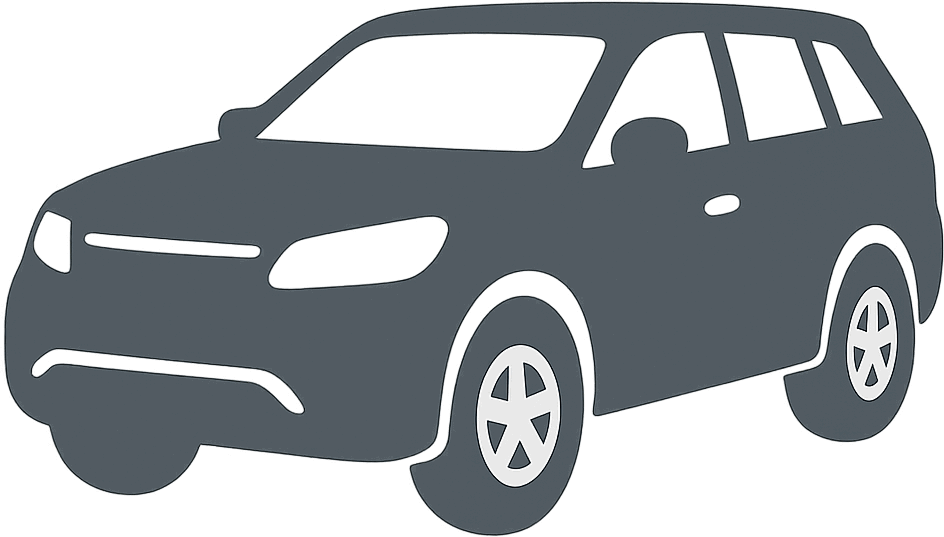 1991 Mazda Navajo Dimensions, Size & Specs
1991 Mazda Navajo Dimensions, Size & Specs
Measurements of the 1991 Mazda Navajo, engineered for optimal performance and comfort
| Dimensions | |
|---|---|
| Length: | 4453 mm175.3 in14.6 ft |
| Width: | 1783 mm70.2 in5.8 ft |
| Height: | 1730 mm68.1 in5.7 ft |
| Trunk Capacity: | 597 liter21.1 cu ft |
| Trunk Capacity (Max): | 1273 liter45.0 cu ft |
| Weight Specifications | |
| Curb Weight: | 1805 kg3979 lbs |
| Tire Specifications | |
| Rims Size: | 15-inch rims:
|
| Tire Size: |
|
The Mazda Navajo, produced between 1991 and 1995, is a mid-size SUV that combines rugged utility with practical dimensions, making it a versatile choice for both urban and off-road driving. Measuring 4453 mm (about 175.3 inches) in length, 1783 mm (70.2 inches) in width, and standing 1730 mm (68.1 inches) tall, the Navajo offers a balanced footprint that fits well in a variety of environments, from tight city streets to rugged trails.
Weighing in at a curb weight of 1805 kg (approximately 3980 lbs), this SUV provides a solid and stable driving experience without being excessively heavy. The Navajo’s luggage capacity is noteworthy for its class, offering 597 liters (21.1 cubic feet) of cargo space behind the rear seats, which expands impressively to 1273 liters (44.9 cubic feet) when the rear seats are folded down, making it a practical vehicle for family trips or transporting bulky gear.
Equipped with 15-inch rims sized at 6.5J x 15 and fitted with 225/75 R15 tires, the Mazda Navajo delivers a comfortable ride while maintaining good traction and stability. This tire and rim combination is well-suited for the SUV’s dual focus on performance and comfort.
Overall, the Mazda Navajo is a classic early 1990s SUV that offers a solid blend of size, capability, and cargo flexibility. Its moderate dimensions make it an appealing option for those seeking a dependable and manageable SUV that is still capable of a variety of driving tasks. Whether you’re comparing it to other SUVs of its generation or looking for an understated, practical vehicle, the Mazda Navajo holds a distinct place in the evolution of mid-size SUVs.
Discover the standout features that make the 1991 Mazda Navajo a leader in its class
Have a question? Please check our knowledgebase first.
The 1991-1995 Mazda Navajo has a length of 4453 mm (175.3 inches), a width of 1783 mm (70.2 inches), and a height of 1730 mm (68.1 inches). These dimensions place it within the compact SUV segment, making it a suitable size for urban and suburban driving while still offering ample interior space. Its footprint balances maneuverability with passenger and cargo room effectively.
The curb weight of the Mazda Navajo (1991-1995) is approximately 1805 kg (3,978 lbs). This weight reflects its sturdy SUV build, which contributes to a solid and stable driving experience. While the weight adds to stability and off-road capability, it may slightly affect acceleration and fuel efficiency compared to lighter vehicles. The Navajo balances these factors well for a vehicle of its class and time.
The Mazda Navajo offers a luggage capacity of 597 liters (about 21.1 cubic feet) with the rear seats in use, providing suitable space for everyday cargo needs such as groceries, luggage, or sports equipment. When the rear seats are folded down, this capacity expands to 1273 liters (approximately 44.9 cubic feet), allowing for larger items or increased cargo volume. This flexibility is advantageous for road trips and various transport requirements.
The Mazda Navajo comes equipped with 6.5J x 15-inch rims paired with tire sizes of 225/75 R15. These relatively tall tires provide a good balance between ride comfort and off-road capability. The larger sidewall of the 225/75 tires helps absorb road imperfections, contributing to a smoother ride, while the rim size maintains good handling responsiveness. This setup supports the Navajo's versatility as both a commuter and light off-road SUV.
Yes, the Mazda Navajo fits comfortably into a standard residential garage. With a height of 1730 mm (68.1 inches) and a width of 1783 mm (70.2 inches), it is well within the typical garage door dimensions found in many homes, which usually accommodate vehicles up to around 2 meters (79 inches) in height and similar widths. Its length of 4453 mm (175.3 inches) also fits typical garage depths, making parking convenient and secure.
The 1991-1995 Mazda Navajo did not have a direct predecessor under the Navajo name, as it was Mazda's first foray into the SUV market, developed in collaboration with Ford and based on the Ford Explorer platform. Compared to earlier Mazda vehicles, which focused more on sedans and smaller crossovers, the Navajo marked Mazda's entry into larger, rugged SUVs. Its size and design were in line with early 1990s SUV trends, offering competitive interior space and capability previously not available in Mazda's lineup.
The Mazda Navajo shares many characteristics with contemporaries such as the first-generation Ford Explorer, given its platform-sharing origins. It offers competitive exterior dimensions with a length of 4453 mm (175.3 inches), width of 1783 mm (70.2 inches), and height of 1730 mm (68.1 inches), placing it firmly within the compact SUV category of the early 1990s. Practicality-wise, its luggage capacity of up to 1273 liters (44.9 cubic feet) with seats folded rivals competitors, making it a practical choice for families and outdoor enthusiasts. Additionally, the Navajo's tire and rim setup support both on-road comfort and off-road utility, reflecting typical expectations of SUVs in that period.
The Mazda Navajo is configured as a typical five-passenger SUV, offering two front seats and a rear bench seat. While compact by today's standards, the interior was designed to comfortably accommodate adults in both rows, aided by the vehicle's reasonable width of 1783 mm (70.2 inches). Its relatively tall height of 1730 mm (68.1 inches) provides decent headroom, contributing to passenger comfort on longer trips. The flexible rear seating also complements its cargo versatility.
Due to its mid-sized SUV build with a curb weight of 1805 kg (3,978 lbs), the Navajo requires standard SUV maintenance, including regular checks on suspension components that handle the vehicle's weight and off-road potential. The tire size of 225/75 R15 demands the correct pressure and regular rotation to ensure even wear. Additionally, its moderately tall height and width mean attention should be paid when parking in tight spaces to prevent scrapes. Overall, maintaining the Navajo aligns with typical SUV upkeep but should be mindful of its platform-shared legacy with Ford for parts and service.
The Mazda Navajo was equipped with a 2.3-liter 4-cylinder engine, producing around 110-120 horsepower depending on market and year. It was offered with rear-wheel drive or optional four-wheel drive systems, catering to both on-road drivers and those needing some off-road or adverse weather capability. The drivetrain configurations aligned closely with the Ford Explorer's offerings, given the shared platform. This allowed the Navajo to balance fuel economy and utility within the early 1990s SUV segment.
Discover similar sized cars.

| Production: | 2008-2012 |
|---|---|
| Model Year: | 2008 |
| Length: | 4493 mm176.9 in |
| Width: | 1839 mm72.4 in |
| Height: | 1797 mm70.7 in |

| Production: | 2007-2013 |
|---|---|
| Model Year: | 2008 |
| Length: | 4493 mm176.9 in |
| Width: | 1839 mm72.4 in |
| Height: | 1781 mm70.1 in |
